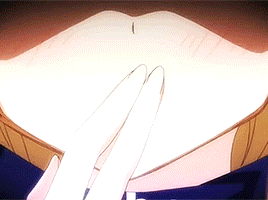I don't know how you got this far. welcome, none the less. I do not advise you linger, however.
Don't wanna be here? Send us removal request.
Text
4K notes
·
View notes
Text
A small reminder <3 This was a side blog. If you'd like to see what I'm up to currently, follow me at @ sovereign-galaxy
:3
0 notes
Photo


Drew Monde the other day, I just can’t get enough of this demon gal!
2K notes
·
View notes
Text
The Mortar and Pestle
I can think of no tool in a witches’ arsenal which requires more finesse than the mortar and pestle. So often people will pick one up, looking forward to pounding and grinding, not realizing it takes so much more than brute force. Resins will gum up, herbs will be stirred with little to no effect, roots will refuse to powder, all causing a great deal of frustration to those who so looked forward to using this marvelous set. But here’s the secret to using a mortar and pestle: brute force is rarely ever needed, and will not work well in most cases.
Working with resins, herbs, spices, flowers, and more can be maddening with a mortar and pestle, as each of these requires different ways of grinding and working. You cannot approach each the same, as each is entirely different. Simply pounding away at everything will not produce the fine powders so often hoped for. In some cases, a powder is simply not attainable. But, with a little patience and cunning, the tool will serve you well. But before we get to any of that, it’s important to note that if you’re having excessive trouble with working with a mortar and pestle, and the set came from a specialty occult shop, it might just be best to toss it aside. Most of the time these sets are too smooth, not having what it takes to actually grind the materials down. A mortar and pestle made for culinary use is usually the best way to go. Such sets are generally not expensive, and will last you a lifetime.
With that in mind, left’s get right to it! Below are a few examples of the different grinding methods I use.
Resins- Resins can be notoriously difficult to powder properly, often succumbing to the friction between the mortar and pestle and gumming up. Even pounding the resinous chunks too hard will result in sticky pieces. When it comes to tree resins, you must consider what it is you are grinding. Don’t pound the chunks with all your might, or try to grind them with force. No, resins require a delicate touch. Use the pestle to gently hit the chunks until they crack apart. Then use the pestle smoothly, gently, with patience. Resins will take time to powder, giving you plenty of chance to focus your will as you work. Before you know, the gently circular grinding motion will produce a fine powder for any use. Be aware, though, that you cannot use one technique for all resins. Copal powders easier than Dragon’s Blood, which powders far easier than Myrrh.
Dried Herbs and Flowers- Another example of a place where brute force will not serve you, though dried herbs and flowers are much more forgiving. Rosemary, jasmine, lavender, and vervain are all good examples here. Simply stamping at these will not be enough. Often times it takes a gentle grinding of these ti create a suitable material for a powder. Some dried herbs, like mugwort, simply will not powder, whereas Jasmine flowers will be reduced to a fine powder in mere seconds. As with resins, take your time. Be gentle. When you grind dried herbs, you’re either working with botanicals you have dried yourself, or that come prepackaged. If you’ve dried them yourself, you’ll have a much easier time. Prepackaged herbs, while useful at times, are very difficult to grind down any further than the state in which they are purchased. It’s possible to do though with yet more patience.
Dried Roots, Barks, and Berries- Don’t let anyone tell you these are easy to grind because holy mother, that is a lie. Dried roots, bark, and berries are prbably the hardest thing I’ve ever had to grind in my life, and these botanicals are some of the only ones where brute force is your friend. Each of them requires a great deal of power to break down. However, once you’ve pounded them apart, the force is no longer needed. You’ll still have to give it some welly, but it won’t require near as much effort once you’ve broken the materials down. Mandrake root is a good example of this. When dried, mandrake becomes wood-like. It’s very difficult to break down. However, once you’ve got it worked down, you can powder it as you would anything else. Other roots are not so forgiving which is why, if you pull your iwn roots, I encourage you to slice the root pieces into disks. These are much more managable than even small pieces, as the larger surface area gives you more to work with. Bark should be handled much the same. As far as berries, you have to be sure they’re comoletely dry before attempting to work then down. Some berries are far easier to powder than others. Juniper berries (not being real berries) will give you hell. But, as always, keep your patience. It will serve you well.
Fresh Botanicals- This is where you’ll want to forget about powdering. When it comes to fresh botanicals, it’s often only feasable to draw out the juices via stamping and bruising of leaves and flowers, or making a paste by the addition of warm water. Roots will create a paste of their own, as will mucilagenous plants like aloe-vera and marshmallow. Berries will simply muddle down. If you’re trying to get seeds from fruits or berries, you can use a mortar and pestle to (gently) muddle the materials, then add water. After some time, the seeds will sink to the bottom while the body of the fruit/berry floats. Using fresh botanicals in a mortar and pestle can create a great poultice, as well as helping release the volatile oils and constituents of a plants for an infusion or decoction.
However you choose to use your mortar and pestle, remember that it will take time to really understand the tool, and longer to get the hang of it. However, the nortar and pestle is, I feel, and integral part of witchcraft practice. One can learn so much from working their botanicals down, smelling them, hearing them, feong what it takes to break them down, and more. While the mortar and pestle have a great deal of uses beyond just grinding, it’s a great place to start. Happy grinding!
10K notes
·
View notes
Text
powai:
spin the bottle except instead of kissing each other you fight
594K notes
·
View notes
Photo










“After a prototype was constructed for Haman Karn’s personal use, the Qubeley II was completed, incorporating systems from the Psyco Gundam Mark II that had been recovered by Axis, and the Qubeley series was concluded for the time being.
But Glemy Toto, who had obtained the Psyco Gundam Mark II’s schematics before Haman, put the Qubeley Mark II into mass production for use by the clone Cyber-Newtype Ple-Two, forming an invincible Newtype Corps.“
-from “Gundam Wars II: Gundam ZZ”
143 notes
·
View notes
Photo










The Official Gundam Fact File - Mechanical Illustrations Vol. 1
Part 2
1K notes
·
View notes
Text


Made a Medieval Char Aznable. Proud of myself.

748 notes
·
View notes
















